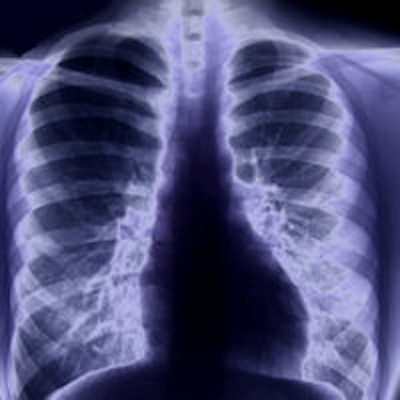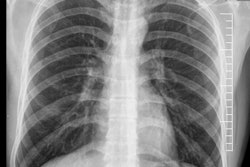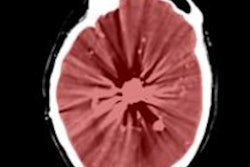
A structured four-year scheme for reporting of chest x-rays (CXRs) by radiographers has brought impressive results at the Christie in Manchester, a leading U.K. cancer hospital. The percentage of CXRs waiting six days or more for a formal report has fallen from 8.5% in 2010 to 0.15% in 2014, and the average turnaround time has been cut from 2.8 days in 2010 to 1.7 days in 2014.
In total, 34% of all CXRs are now reported by radiographers. The radiographers' reports are audited monthly for accuracy, and for the past two years, radiographer reporting accuracy from the audit was 97%, which lies within the overall department reporting accuracy rates, according to Susan Todd from the radiology department at the Christie National Health Service (NHS) Foundation Trust. Over this period, there were an additional three reports discussed at the monthly departmental discrepancy meeting and agreed as being discrepant.
Todd is herself an example of a highly trained, specialist radiographer. In addition to holding a radiography diploma from the U.K. College of Radiographers, she has an Master of Science in medical imaging and a postgraduate certificate in clinical reporting of the adult chest. She was the lead author of a poster presentation on this topic that grabbed many delegates' attention during last week's U.K. Radiological Congress (UKRC).
The Christie is a specialist cancer center, and the radiology department offers a comprehensive imaging and interventional service for the 250,000 outpatient appointments and 18,100 inpatient appointments annually. The radiology department has 15 full-time equivalent radiology consultants, one specialist fellow, and three specialist radiology trainees, Todd and her colleagues noted.
At the Christie, CXRs are regularly performed to evaluate disease status during and after treatment, for surveillance, and for the full range of clinical symptoms that affect the chest. More than 85% of plain film examinations are CXRs.
Radiographer reporting was introduced in 2010 to reduce the turnaround time for chest x-rays (i.e., time from examination being performed to report being available for referring clinicians), to free up radiologists' time to perform complex radiology such as CT and MRI reporting (availability of CT and MRI was restricted due to reporting capacity), and to promote skill mix by introducing advanced practice for radiographers in reporting, as well as to move toward the four-tier structure outlined by the U.K. College of Radiographers in 2003.
In the summer of 2011, two senior radiographers obtained the postgraduate certificate in clinical reporting of the adult chest. Due to the specialist nature of radiological examinations performed at the Christie, a further 12-month period of supervised reporting by a senior radiologist (or consultant) was instigated.
The radiographers have verified their own reports since May 2012, and now they do eight hours of reporting each per week, which is the same reporting allocation as a consultant. The supporting clinical governance framework includes monthly audit of radiographer reports, attendance at the department's discrepancy, interesting cases and relevant multidisciplinary team meetings, plus opportunities for continuing professional development and teaching radiographers/other staff groups within the hospital trust (i.e., group).
The strategy has led to greater flexibility to cover more CXR reporting, which helps when a radiologist's leave changes at short notice due to sickness or some other reason, and it can reduce reporting pressures in CT and MRI, according to Todd.
Other important outcomes include the following:
- Increased interest and awareness by general radiographers of the value of optimal CXR technique and chest anatomy/pathology.
- A greater willingness to be prepared to move toward initial clinical evaluation by all general radiographers (e.g., central line tip position).
- Awareness that CXR reporting also requires knowledge of musculoskeletal appearances.
- Gaining experience in viewing CT and PET/CT scans as these may be the only images/report available to assist in analyzing the current chest x-ray.
- Attending multidisciplinary team and other meetings about interesting cases allows greater insight into disease processes, treatment, and complications, which in turn enables a more specific conclusion.

















